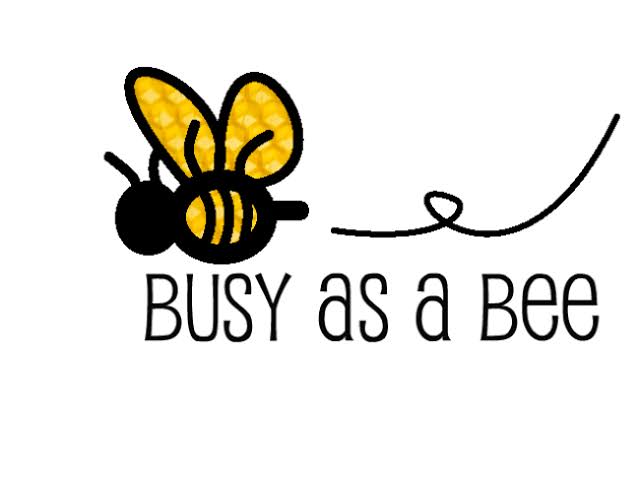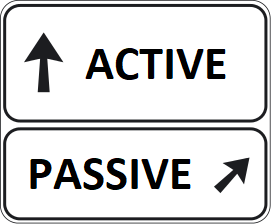Alliteration is a literary device in which a consonant is repeated at the beginning of a series of words or sentences. It is frequently used in poetry, but it is also found in prose such as novels and plays. Alliteration can have a variety of effects depending on how it is used in the text, both on the meaning of the text and on the reader’s experience!
- What is Alliteration?
- Purpose of Alliteration
- Effects of Alliteration
- How to Identify
- Common Examples in Everyday Speech
- Brand Name Alliteration Examples
- Famous Examples in Fictional Character Names
- Famous People with Alliterative Names
- Alliteration in Phrases and Quotes
- Examples in Poetry
- Example in Tongue Twisters
- Alliteration in Rhymes and Stories
- 3 Ways Alliteration Is Used in Poetry
- Difference Between Alliteration, Consonance, and Assonance
- How Do You Write Alliteration?
- Why Use Alliteration?
- Final Thoughts
- FAQ Section
What is Alliteration?
It is a literary device that reflects the repetition of initial consonant sounds in two or more nearby words. It refers to the repetition of the consonant sound at the beginning of words rather than the repetition of consonant letters at the beginning of words. The phrase “kids’ coats,” for example, is alliterative because the words have different consonant letters but produce the same consonant sounds.
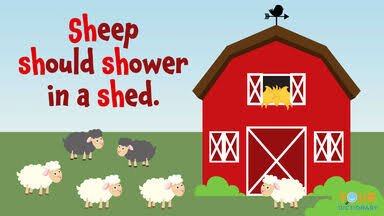
Similarly, the phrase “phoney people” is not alliterative because, while both words begin with the same consonant, the initial consonant sounds differ. Furthermore, for alliteration to work, alliterative words must be spoken in rapid succession. If there are too many non-alliterative words between the alliterative words, the literary device isn’t working.
Alliterative “tongue twisters,” for example, can help language learners, particularly children, hear similar sounds repeated at the start of several words. Peter Piper picked a peck of pickled peppers is a well-known alliterative tongue twister. Peter Piper picked a pound of pickled peppers. Despite their association with children, alliterative tongue twisters are useful for practising and improving pronunciation, fluency, and articulation. They are frequently used by actors, politicians, and public speakers to practise speaking clarity.
Purpose of Alliteration
To make their verses melodious, poets employ a variety of poetic devices. They are frequently used in poetry to create rhythm and melody by synchronizing the words with the metrical patterns. Similar sounds create a distinct stress pattern that is appropriate for the themes. As a result, the main reason poets use it is to make their poetry more melodious, flowery, interesting, and musical.
Effects of Alliteration
In the verses, it creates a flow and music. When sounds are similar, they soothe the ears and make reading easier. This reading of metrical patterns with such frequently occurring sounds adds to the pleasure of poetry reading. They can have the effect of inducing intoxicating and relaxing feelings in the readers and listeners.
How to Identify
The best way to find alliteration in a sentence is to sound it out and look for words that start with the same consonant sound. Alliterative words don’t have to begin with the same letter; they just have to have the same first sound. Small, non-alliterative words can also interrupt them.
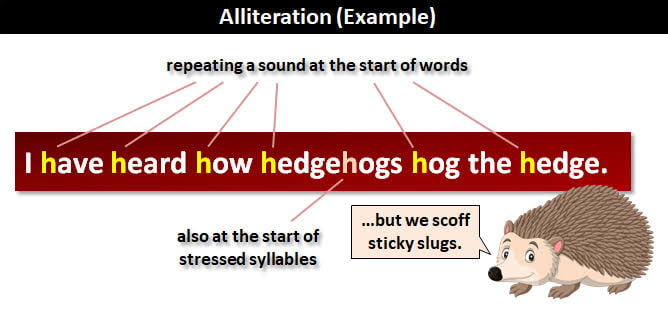
“James and the Giant Peach,” despite using both “j” and “g” and including the words “and” and “the,” is still an example of alliteration. Look over these sentences to see if you can spot any alliteration.
- Becky’s beagle barked and bayed, becoming bothersome for Billy.
- Can you keep the cat from clawing the couch? It’s creating chaos.
- Dan’s dog dove deep in the dam, drinking dirty water as he dove.
- Fred’s friends fried fritters for Friday’s food.
- Greedy goats gobbled up gooseberries, getting good at grabbing the goodies.
- Hannah’s home has heat now, hopefully.
- Jackrabbits jump and jiggle jauntily.
- Kim’s kid kept kicking like crazy.
- Seven sisters slept soundly on the sand.
- Tim took tons of tools to make toys for the tots.
- Vivien is very vixen-like and vexing.
- While walking wearily I wondered where Wally was.
- We walked while wondering where Wally was.
- The xenophobes were zooming and in the zone.
- My friend foolishly forgot to take the first photo in France.
- The gentle giant jumped with joy.
- Hopefully, Harry’s home will have heat soon.
- Ian was interested in eating ice cream.
Common Examples in Everyday Speech
In everyday conversation, people frequently use alliterative phrases. These phrases may sound cliched at times, but they are effective in conveying both broad and familiar meanings. Here are some alliteration examples from everyday speech:
- Cream of the crop;
- french fry;
- hit the hay;
- pecan pie;
- super-Size;
- tough talk;
- busy as a bee;
- dead as a doornail;
- home sweet home;
- living life;
- out of order;
- right as rain
- quick question;
- picture perfect;
- high heaven.
Brand Name Alliteration Examples

Alliteration is a simple concept to remember, which is why many businesses and brands use it in their names. Here’s a list of some well-known brands and businesses that make use of alliteration to stand out:
- American Airlines
- American Apparel
- Coca-Cola
- PayPal
- Dunkin’ Donuts
- Best Buy
- Krispy Kreme
- Chuckee Cheese’s
Famous Examples in Fictional Character Names
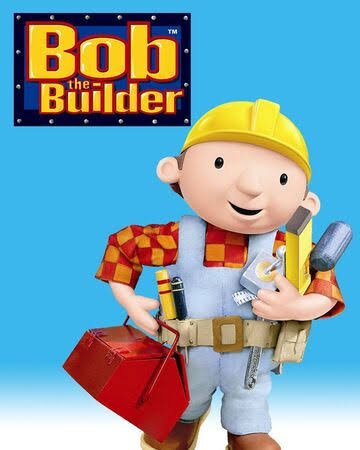
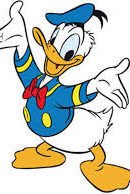
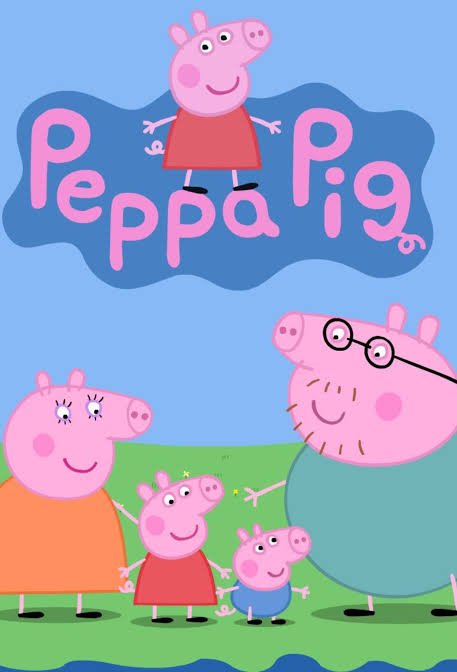
Alliteration is also used by many artists and writers for fictional character names. This literary device allows for the creation of memorable and fun-sounding names, which is especially useful in children’s entertainment and literature. Here are some fictional character names with alliteration.
- Bob the Builder
- Wicked Witch of the West
- Mickey Mouse
- Minnie Mouse
- Bugs Bunny
- Daffy Duck
- Donald Duck
- Daisy Duck
- Pig Pen
- Beetle Bailey
- Peppa Pig
- Holly Hobbie
- Kris Kringle
- Shaun the Sheep
- Phineas and Ferb
- Buster Baxter
- Lois Lane
- Peter Parker
- Wonder Woman
- Miss Muffet
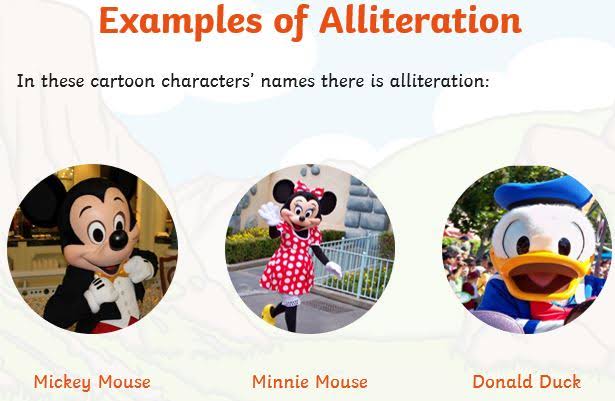
Famous People with Alliterative Names

The alliteration effect can also be used with a name to help it stand out in a crowd and be remembered. Because of the alliteration in their names, you might recognise some of the famous names below.
- William Wordsworth
- Porky Pig
- Lois Lane
- Marilyn Monroe
- Fred Flinstone
- Donald Duck
- Spongebob Squarepants
- Ronald Reagan
- Jesse Jackson
- Michael Moore
- Mickey Mouse
Alliteration in Phrases and Quotes
Many famous quotes, idioms, phrases, and sayings contain alliteration:
- Home sweet home
- Living life
- Make a mountain out of a molehill
- Method to the madness
- Neck and neck
- Not on your nelly
- Pleased as punch
- Out of order
- Right as rain
Examples in Poetry
- ‘From forth the fatal loins of these two foes…’ (Romeo and Juliet – William Shakespeare)
- ‘Once upon a midnight dreary while I pondered weak and weary.’ (The Raven – Edgar Allen Poe)
- ‘Shining sun / Green, green grass / Birds building / New nests’ (Sunny Spring – Twinkl)
I need not your needs, They’re needless to me,
For kneading of needles, We’re needless, you see;
But did my neat trousers, But need to be kneed,
I then should have need of your needles indeedFrom Baker’s Reply to the Needle Salesman by unknown
They click upon themselves
As the breeze rises, and turn many-colored
As the stir cracks and crazes their enamel.
Soon the sun’s warmth makes them shed crystal shells
Shattering and avalanching on the snow-crust—“Birches” by Robert Frost (1916)
Alliteration is one of the most common poetic devices in history, with examples dating back to the English language’s inception. One of the most well-known poems that uses it is Edgar Allan Poe’s “The Raven” (1845):
Once upon a midnight dreary, while I pondered, weak and weary,
Over many a quaint and curious volume of forgotten lore,
While I nodded, nearly napping, suddenly there came a tapping.
This is a clever use of alliteration, made all the more effective by its restraint. Poe only uses alliteration on pairs of words, but he creates rhythm and urgency by doing so repeatedly over consecutive lines. Later in the poem, he adopts a more firm stance:
Deep into that darkness peering, long I stood there wondering, fearing
Doubting, dreaming dreams no mortal ever dared to dream before.
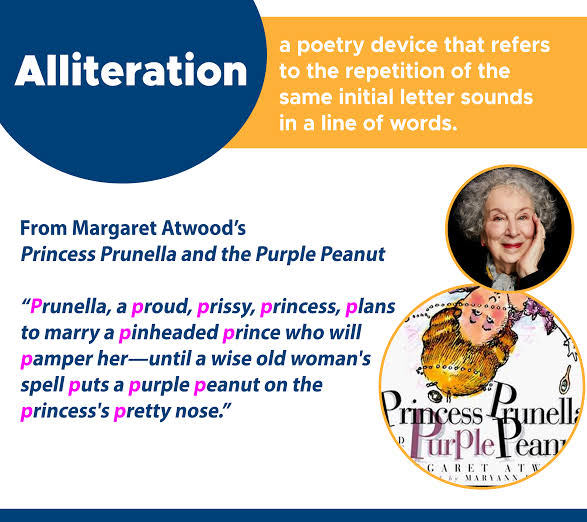
Example in Tongue Twisters
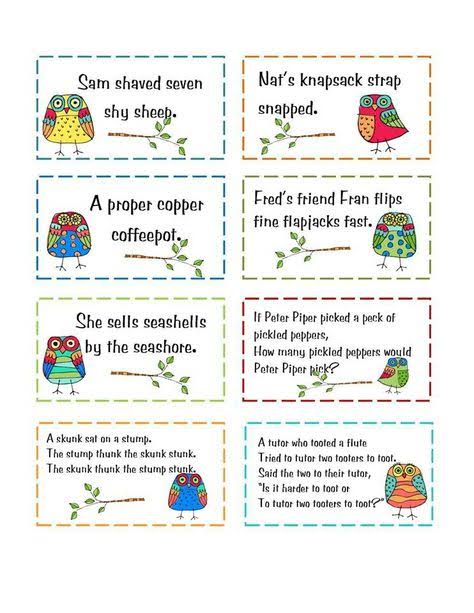
Now that everyone understands alliteration, you can try these four amazing alliteration tongue twisters with kids. They’ll undoubtedly adore them:Peter Piper picked a peck of pickled peppers
A peck of pickled peppers Peter Piper picked
If Peter Piper picked a peck of pickled peppers
Where’s the peck of pickled peppers Peter Piper picked?Betty Botter bought some butter
But she said the butter’s bitter
If I put it in my batter, it will make my batter bitter
But a bit of better butter will make my batter better
So ‘twas better Betty Botter bought a bit of better butterHow much wood would a woodchuck chuck if a woodchuck could chuck wood?
He would chuck, he would, as much as he could, and chuck as much wood
As a woodchuck would if a woodchuck could chuck wood
- A good cook could cook as many cookies as a good cook who could cook cookies.
- Silly Sally swiftly shooed seven silly sheep. The seven silly sheep Silly Sally shooed shilly-shallied south. These sheep shouldn’t sleep in a shack.
- Black bug bit a big black bear. But where is the big black bear that the big black bug bit?
- Sheep should sleep in a shed.
- A big bug bit the little beetle but the little beetle bit the big bug back.
Alliteration in Rhymes and Stories
For children, reading alliteration in nursery rhymes and stories is enjoyable and entertaining. These phrases can aid in the development of memory and phonics awareness in children.
- “Three grey geese in a green field grazing. Grey were the geese and green was the grazing.” – “Three Grey Geese,” Mother Goose
- “Great Aunt Nellie and Brent Bernard who watch with wild wonder at the wide window as the beautiful birds begin to bite into the bountiful birdseed.” – Thank-You for the Thistle, Dorie Thurston
- “My counters and cupboards were completely cleared of carrot cake, cornbread and crackers.” – Betty’s Burgled Bakery, Travis Nichols
- “Slowly the slug started up the steep surface, stringing behind it scribble sparkling like silk.” – Some Smug Slug, Pamela Duncan Edwards
3 Ways Alliteration Is Used in Poetry
1. Alliteration is used in poetry for a variety of reasons, the most common of which is that it sounds good. It’s a brilliant method for capturing readers’ or listeners’ attention. It’s also a clear way to indicate that the alliterative words are thematically linked, and it draws attention to the subject matter.
2. The second way alliteration is used in poetry is to create a mood. While any subject could theoretically be described with a wide range of words, certain letter sounds have specific connotations, which are amplified by repetition. Consider the “s” sounds in words such as “silt,” “seas,” and “silver.” It almost makes words sound whispered, and depending on the context, it can evoke a sense of mystery, solemnity, or intimacy. Sibilance, which also applies to the consonants starting with “ship,” “zip,” “chasm,” “genre,” and “jealous,” is a word for the repetition of this type of letter sound. Hard consonant sounds like “ck” in “cat” or “g” in “good,” as well as “plosives” like “b” and “p,” are the polar opposite.
3. Alliteration’s alternate names—initial rhyme or head rhyme—indicate the third reason for its use. Alliteration, like perfect rhyme, gives verse melody and rhythm, as well as a sense of how it should sound when read aloud. Alliteration—and its siblings, assonance and consonance—are useful tools to have in your writing toolbox because perfect rhyme isn’t widely used in contemporary poetry.
Difference Between Alliteration, Consonance, and Assonance
Alliteration, consonance, and assonance are literary devices used to emphasise, draw attention to, and emphasise the importance of words in poetry, prose, or speech. The repetition of initial consonant sounds across the beginnings of several words in a line of text is almost exclusively referred to as alliteration.
Alliteration is rarely used to describe the repetition of vowel sounds, so assonance is used instead. Assonance is the repeated vowel sounds of words in close proximity to each other in a line of text, whether at the beginning, middle, or end. The repetition of consonant sounds in successive words is known as consonance, of which alliteration is a subcategory. Consonance is the repetition of these sounds at the beginning, middle, and end of words, similar to assonance. Alliteration, on the other hand, is limited to the repetition of consonant sounds at the start of words.
Although both alliteration and consonance use the same consonant repetitions, alliteration uses it in a different way. A consonance, on the other hand, does not always have the same initial sounds as the words around it. Consonant sounds can occur in words that are used in the same verse but at different ends. A babbling baby, for example, is both an alliteration and a consonance. A consonance, on the other hand, does not have to be an alliteration. For example, “the baby who always babbles” is a consonance. The sound of /b/ makes the difference in both cases. In the first example, it occurs as the initial sound in two neighbouring words, whereas in the consonance, the words are far apart.
How Do You Write Alliteration?

Alliteration can be used in a variety of situations. In writing, however, it’s frequently found in proverbs and poetry. It is a great tool for kids to use in their creative writing activities to help them create masterpieces and pique the interest of their readers.
When they see how playful their pieces have become, they may fall in love with writing as well. Using this feature to emphasise ideas and names can be a great way to make them memorable. Depending on where the repeated sound occurs, we can use them in a variety of ways.
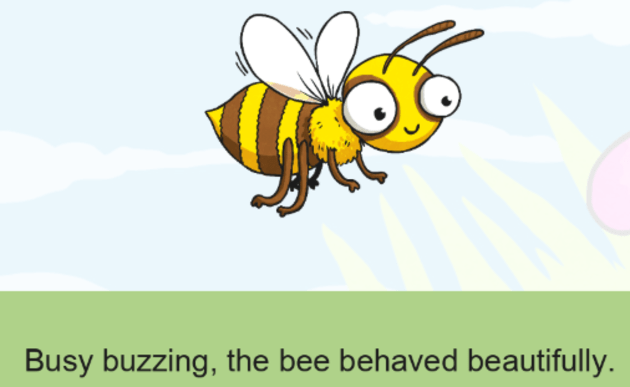
Why Use Alliteration?
Your words will be more engaging and entertaining if you use alliteration. The audience is more likely to pay attention and remember what you say if your writing engages them.
Your words will have more musicality and rhythm if you use alliteration. That is why poets have been using it for a long time and will continue to do so. It can aid in the movement of the poem, giving it a pace that encourages you to continue reading.
Alliteration has become more prevalent in everyday activities over time. Advertisers and musicians, for example, frequently employ alliteration in their work. This is because alliteration makes sentences and phrases sound more playful and easier to remember.
One of the reasons why a commercial line or a song lyric can get stuck in your head is because of this!
Helps You Remember
You’ve seen how alliteration can highlight, emphasise, and make certain parts of a text more memorable. The use of alliteration throughout a poem or piece of prose is uncommon. It usually consists of a few words in a sentence when it is used. It can be used with just two words in some cases. This aids in drawing the reader’s attention to that sentence or phrase in particular.
Creates Mood or Tone
The sound of alliteration can aid in the creation of a poem’s mood or tone. Repetition of the “s” sound, for example, is frequently associated with a snake-like quality, implying slyness and danger. Softer sounds, such as “h” or “l,” can help to create a more contemplative or romantic mood or tone. Alliteration’s repetitive sounds combine with other elements such as metre and word choice to create the desired mood or tone.
Delivers Comedic Effect
Depending on the content and other devices used, alliteration creates a lyrical or bouncy quality that can make the text appear bright and cheerful. As a result, alliteration is frequently used for comedic effect, particularly in children’s literature. Alliteration with different consonant sounds is used throughout Shel Silverstein’s poem “Sarah Cynthia Sylvia Stout Would Not Take the Garbage Out” with great comedic effect, such as when describing the “gloppy glumps” of oatmeal and the “black burned buttered toast.”
This is why authors avoid using alliteration excessively because it can lighten the mood of a text more than intended. Alliteration, on the other hand, is frequently used for comedic effect.
Final Thoughts
Even if there is no rhyme or metre, the repetition of the same sounds at the beginning of a series of words can give the text a rhythm. Consider how the phrase “Peter Piper picked a peck of pickled peppers” sounds spoken aloud. The alliteration creates a hard and fast rhythm that propels the text forward. Alliteration can help set the pace of a piece, either speeding it up or slowing it down, depending on the sounds used, the number of words in the alliterative series, and other literary devices employed.
Alliteration is a fun way to emphasise key points and make names stick in people’s minds. Incorporating this into children’s creative writing is a fantastic way to instil a lifelong love of the written word. Continue the journey with more alliteration examples when you’re ready. When you’re ready for a challenge, throw in a few examples of alliteration poems.
FAQ Section
Why is alliteration used?
Alliteration is used in poetry for a variety of reasons, the most common of which is that it sounds good. It’s a technique for capturing the attention of readers or listeners. Alliteration, like perfect rhyme, gives verse melody and rhythm, as well as a sense of how it should sound when read aloud.
How do you determine alliteration?
The best way to find alliteration in a sentence is to sound it out and look for words that start with the same consonant sound. Alliterative words don’t have to begin with the same letter; they just have to have the same first sound. Small, non-alliterative words can also interrupt them.
Can alliteration be 2 words?
You’ll need two or more words that start with the same consonant sound to make alliteration. It’s more important to concentrate on the sound than the letter because the sound is what draws the audience’s attention.
What are the effects of alliteration?
Alliteration and a repeated rhythm in the text would make the text more striking and memorable to the reader. Alliteration can thus be used to infuse a piece of writing with mood or emotion. It can also be used to add rhythm and emphasis to the context, which helps to remember it.
| TECHNIQUE | TYPE OF SOUND | POSITION IN WORD |
| Assonance | Repetition of vowel sound | Anywhere within a word |
| Consonance | Repetition of consonant sound | Anywhere within a word |
| Alliteration | Repetition of vowel or consonant sound | At the beginning of a word |
Share with your friends
